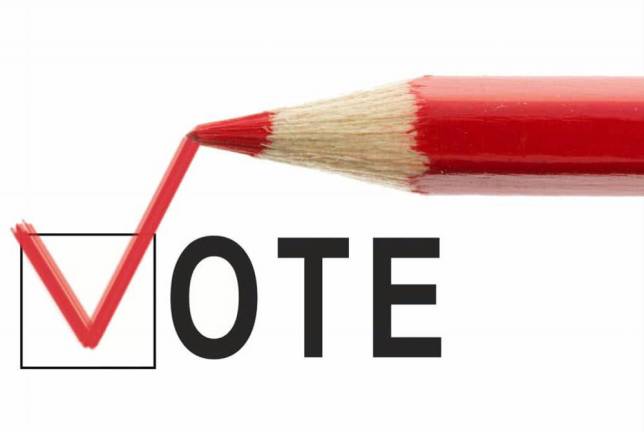WV School Board approves administration’s proposed $98.6 million budget for 2021-22
Warwick. School Superintendent Dr. David Leach said there would be a zero-percent increase in the tax levy and that the budget will both be within or below New York State’s mandated tax cap while maintaining student programs.


The Warwick Valley School Board approved the administration’s proposed $98,620,042 budget for the upcoming 2021-22 school year, at its regular meeting last Thursday, April 22.
School Superintendent Dr. David Leach reiterated his “good news” from the board’s April 13 meeting that there would be a zero-percent increase in the tax levy. He also emphasized that the budget will both be within or below New York State’s mandated tax cap, as well as maintain student programs.
State aid
Leach said previously that the biggest unknown with regard to budget was state aid, or Foundation Aid: the “good news” for district students, taxpayers, and the district is the projected increase in aid, from $27,143,025 currently, to $28,479,978 for the upcoming school year.
Savings
While waiting for a final determination from Albany on aid, the board made reductions in its proposed budget, realizing savings in the following areas: $401,000 in retirement; about $31,000 in Workers’ Comp; and more than $24,000 in debt service.
Revenues and expenditures
School taxes constitute 65 percent of Warwick Valley’s revenue source; the rest of the funds come from state aid, at around 28 percent; local sources, or about 4 percent; the remaining 2 percent comes from other sources.
As one would expect, the majority of the school budget – about 57 percent – is instruction-related; benefits and debt service account for about 29 percent; general support expenses account for nearly 9 percent; the remaining 4 percent is spent on transportation.
Reopening
The administration originally wanted to reopen all district schools five days a week, but new Health Department guidance was deemed “problematic.”
While trying to maximize in-person 7-12 instruction. K-6 is in 5 days a week; WV is now focusing on grades 7 – 12 running on the hybrid model. Leach said that, based on NYSDOH current guidance in areas that have high risk of transmission (like in Orange County), the schools can only do in-person learning when students are kept three feet apart only when using cohorting; otherwise, they must be spaced six feet apart. Some districts can do that, because they have low enrollment.
Leach said that moving the distance in grades 7-12 from six feet to three will depend on “the community’s risk tolerance, based on its unique circumstances.” The community will have a chance to offer feedback before making the change.
“It’s a priority of ours to get our kids back five days a week, and were extremely disappointed” with the new health department guidance, but that the district “will know more very soon” regarding eventually moving the higher grades back to full-time in-person learning.
BOCES and Special Education
Warwick Valley participates in Orange/Ulster BOCES as part of 18 component schools.
Representing 7.5 percent of WV’s total budget, BOCES offers an array of programs, services, supplies and software, according to Assistant Superintendent for Business Tim Holmes.
The two largest categories of services offered by BOCES are Special Education, at about $8.3 million (or 65 percent), and career services and instruction, coming in at around $1.9 million. The latter category includes Odyssey of the Mind, Mock Trials, Youth in Government and instructional software.
When WV can’t meet the needs of district Special Ed students, it coordinates with BOCES to transport them to programs in other districts, such as in Rockland County.
Costs associated with Special Ed include: legal hearings, doctors and therapists, tuition, private schools, BOCES and supplies.
Transportation
The district is planning to retire five 65-passenger buses from 2005, and hopes to buy two propane-powered, 65-passenger buses; one 65-passenger gas-powered bus; one 21-passenger Micro Bird wheelchair bus; one 21-passenger Micro Bird bus; one bus maintenance service vehicle, at a maximum total cost of $550,000, of which $250,000 would come from capital reserves. The district would recoup sixty percent of the cost from state transportation aid.
The buses to be phased out are more than 16 years old and have between 174,000 to 200,000 miles on them.
The older the buses, the greater the risk of breakdowns or engine failures, increased maintenance costs, and rust. Twenty eight percent of the fleet has over 150,000 miles. At the April 8 meeting, Holmes pointed out that buses start to have issues after 15 years and by around 120,000 miles. At some point, an aging bus becomes too costly to fix.
Holmes also said that it has been difficult for the district to recruit and hire drivers.
Currently, there are 46 assigned bus drivers and 10 substitutes, 14 bus monitors and two subs.